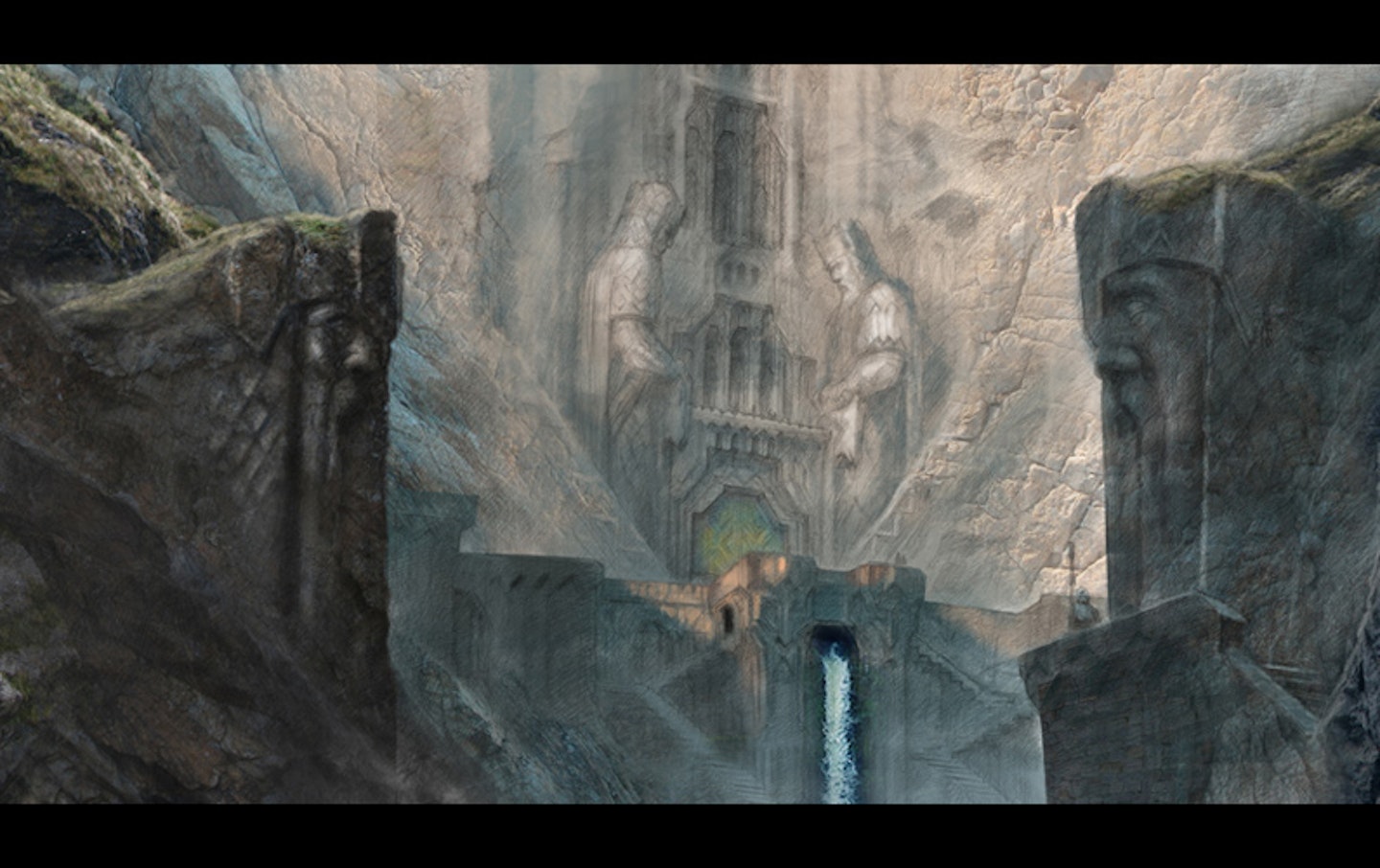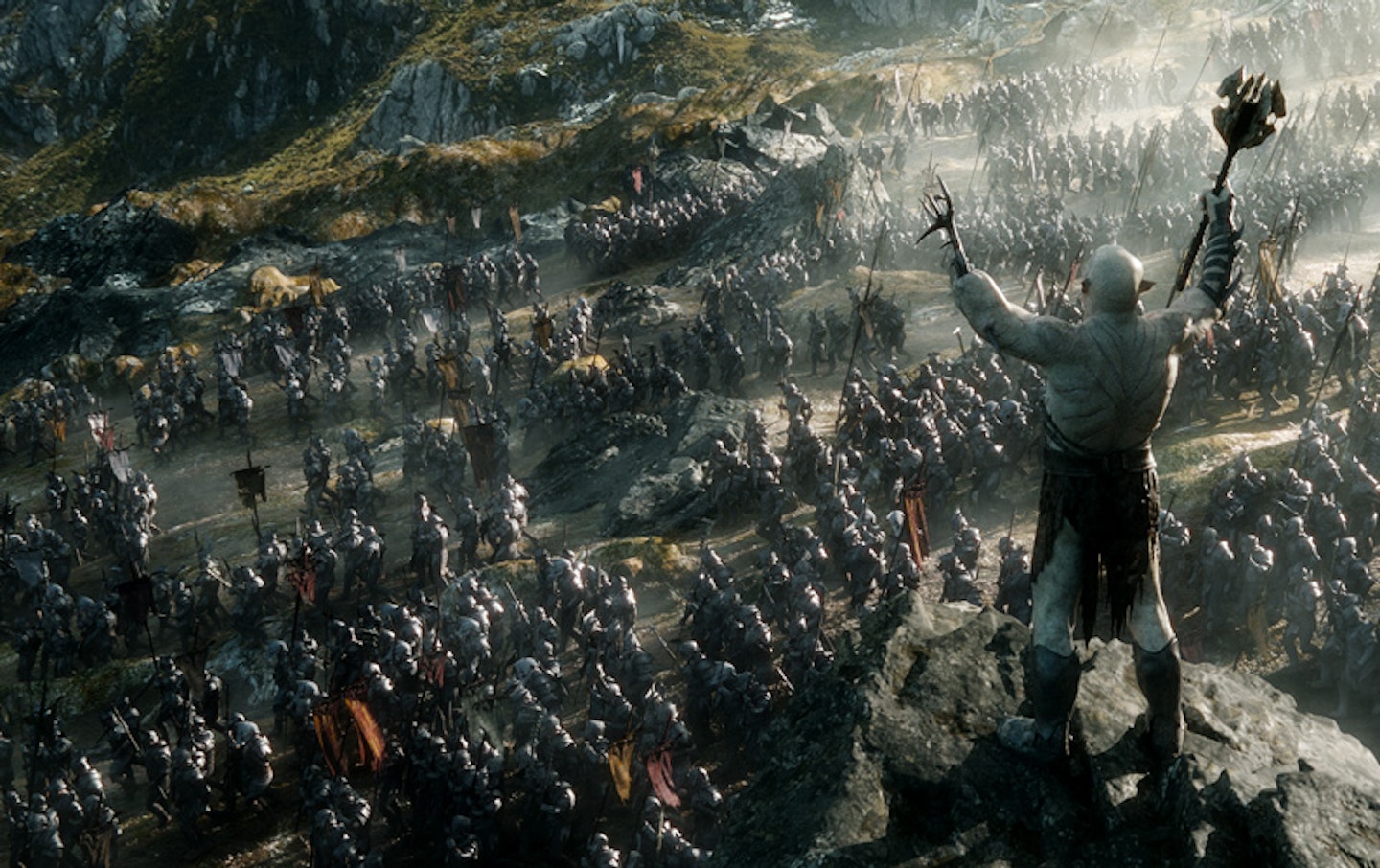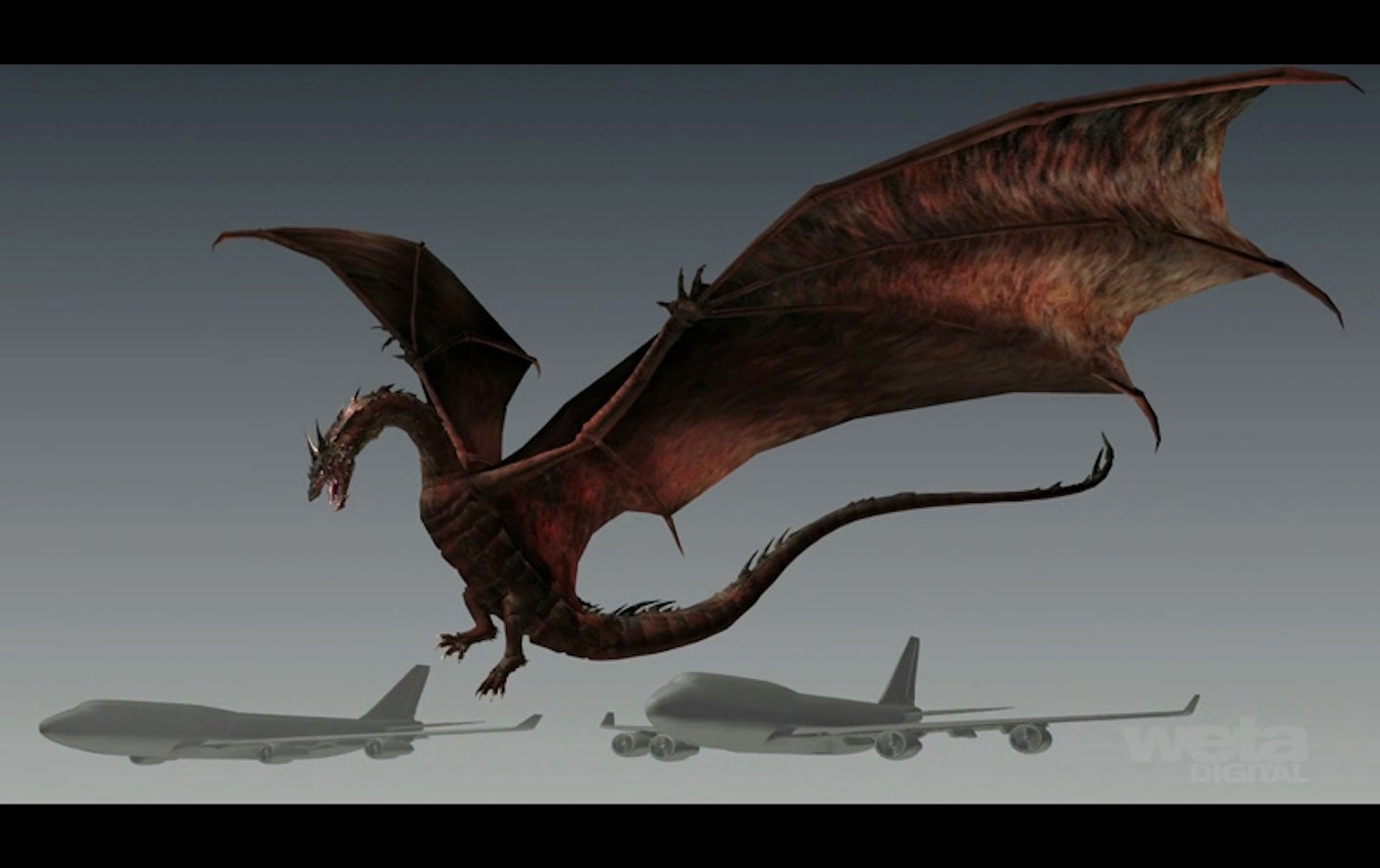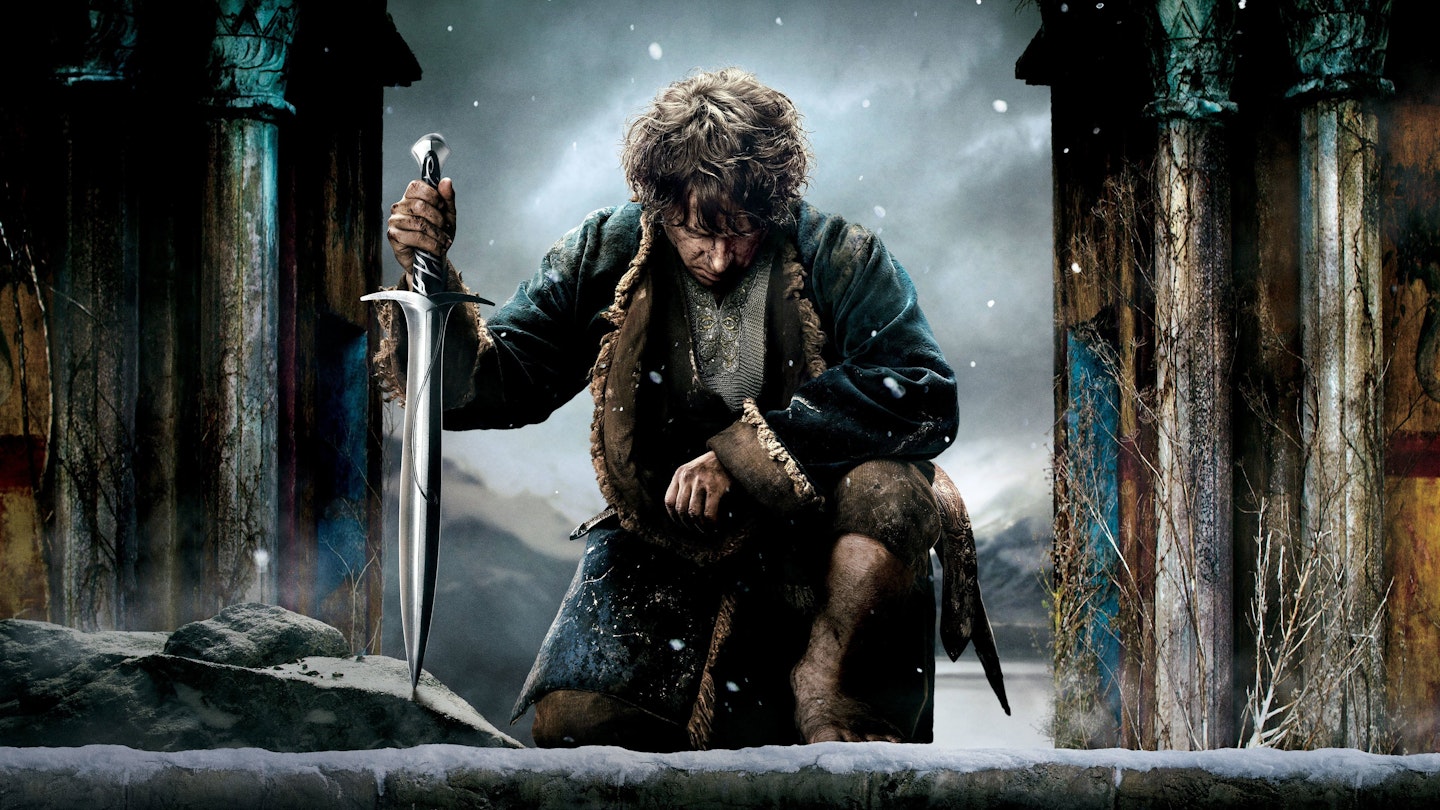WETA WORLD
Empire visits The Hobbit's VFX team
The second part of Empire’s extended edition of The Hobbit: The Battle Of The Five Armies coverage: a visit to the hi-tech workshop of Weta Digital.
In a darkened screening room off the main entrance to The Big House, a hard-floored colonial style manse that quarters but a single portion of Weta Digital, Bolg’s unappetising fizzog looms large in the screen. With a few deft flicks of the keys on his laptop, effects supervisor Chris White sets the picture in motion — it’s a shot from the current trailer and rather than the impressively grotesque features of Azog’s spawn it is the fog billowing behind him White wants Empire to pay attention to.
“I’m working on an environment which is very foggy,” he says with a note of expectancy. Empire swiftly congratulates him. There is no two ways about it, this is pretty realistic mist, encircling the hefty orc like a bad mood.
 Thorin is a little bit troubled around this time. A big part of what we’re doing with the lighting is making the space feel oppressive. - Matt Aitken, VFX supervisor
Thorin is a little bit troubled around this time. A big part of what we’re doing with the lighting is making the space feel oppressive. - Matt Aitken, VFX supervisor
 White’s speciality is “challenging environmental effects”. Before he even started in special effects, he studied particle physics at university and emphasises that he builds his environments up from the smallest particle to accurately reflect the real world. And more important than even fog in his current work load is fire and smoke. The screen flicks to a dragon-grilled Lake-town, orange flames engulfing the wooden warren. Here, White has been particularly concerned with what smoke would look like when the burning building has snow on its roof: “Would that turn into steam, white smoke or black smoke?”
White’s speciality is “challenging environmental effects”. Before he even started in special effects, he studied particle physics at university and emphasises that he builds his environments up from the smallest particle to accurately reflect the real world. And more important than even fog in his current work load is fire and smoke. The screen flicks to a dragon-grilled Lake-town, orange flames engulfing the wooden warren. Here, White has been particularly concerned with what smoke would look like when the burning building has snow on its roof: “Would that turn into steam, white smoke or black smoke?”
At the end of most days, the heads of department gather at the Portsmouth Road headquarters clutching laptops and mugs of tea to get Peter Jackson’s steer on their progress. Taking a look at the burning Lake-town, Jackson mentioned how much he loved it when the flames lick up onto an eve or on a railing and it just gives that look. “Basically there’s a small crew right now and that’s their job”, says White, “to go through and burn buildings, and get that look”.
Fellow supervisor Matt Aitken, whose relationship with Middle-earth goes back to the primordial days before Rings was even greenlit and computers ran on steam, clearly missed his calling as a teacher. With refreshing clarity he talks Empire through a further set of recently finished images. His purview, it transpires, is the Erebor interiors. To make the point, Aitken toggles back and forth between a piece of John Howe concept art and a finished shot of Thorin, deep in the brazier-lit halls of Erebor searching the mounds of treasure for hint of the Arkenstone.
Howe’s art is subtly impressionistic, with a dark, Moria-like splendour just discernable in the shadows. It’s remarkable how the digital version has captured its essence: the glory of Erebor stretching back into the distance, the fitful glow of the fire, and the uncanny digital doubles in mid-shot stooped in misery. There is nothing real in the entire frame, but it is alive.

John Howe's concept art of Erebor
“Peter saw the painting and said, ‘Yeah, make it look like that,’” laughs Aitken, noting how much Howe and Lee, with their antediluvian tools of pencil and paintbrush, have elevated Weta’s game. “They can move toward an approved look faster than CG or pre-viz. It is hard to understand how we could do these films without having them on-board. They have helped define what this world looks like. I remember getting their Tolkien calendars as a kid.”
 There’s a small crew right now and their job is to go through and burn buildings. - Chris White, VFX supervisor
There’s a small crew right now and their job is to go through and burn buildings. - Chris White, VFX supervisor
 Aitken describes Erebor as having a dilapidated former glory gone to ruin. “It has fallen into disuse,” he says, gazing lovingly at the screen. Weta, he insists, don’t simply meet a shopping list of Tolkien marvels, they enhance the storytelling to create a world of feeling as well as wonder. “Thorin is a little bit troubled around this time. A big part of what we are doing with the lighting is making the space feel oppressive. We are trying to take it beyond what is merely realistic. We take it into subjective storytelling.”
Aitken describes Erebor as having a dilapidated former glory gone to ruin. “It has fallen into disuse,” he says, gazing lovingly at the screen. Weta, he insists, don’t simply meet a shopping list of Tolkien marvels, they enhance the storytelling to create a world of feeling as well as wonder. “Thorin is a little bit troubled around this time. A big part of what we are doing with the lighting is making the space feel oppressive. We are trying to take it beyond what is merely realistic. We take it into subjective storytelling.”
As if on cue, John Howe enters. The softly-spoken artist had been envisioning Tolkien on canvas long before Jackson began to work out a theory for bringing the books to the big screen; a theory that would centre on the visionary art of Howe and his fellow artist Alan Lee as conceptual designers.
So many years later, Howe is a pivotal part of the filmmaking process. Once principal production has finished, far from being dispensed with, his services redouble as he hunkers down with his sun-starved digital kin to keep working up marvels of Tolkienalia to be transformed into purest Jacksonian epic.
“I think it is partly to do with Peter’s way of working,” he says, his voice hypnotically smooth, “because he takes his time to decide things that he doesn’t need to decide too early. That he decides when he needs to. We didn’t even know what Smaug looked like on the first movie.”

Azog delivers his team talk before The Battle Of The Armies.
For every CG shot created by Weta Digital there is a chain of source material. There is the book, the script, and then both the pre-viz department. Howe and Lee set to work providing a visual guide to be used on set and later in post. The starting point for shots could be a painting or sketch, or equally the rudimentary CG of pre-viz allowing the digital artists to see the chosen camera angles. Quite often the reference is something that simply springs fully formed from Jackson’s imagination. Howe keeps a sketchbook and pencil handy at all times.
Over 16 years of collaboration, Howe has found Jackson a stimulating partner. “He likes looking at artwork. He knows what he doesn’t want, but he doesn’t know yet what he wants because he hasn’t seen it. And that is the job we have — to bring in things he might not have thought of. I think we designed Beorn’s house six times, if not more.”
 Smaug's travelling at extremely fast speeds. If you tried to operate a flamethrower that was moving through the air that fast, it would extinguish itself. But we can’t have that. - Joe Letteri, Head of Weta
Smaug's travelling at extremely fast speeds. If you tried to operate a flamethrower that was moving through the air that fast, it would extinguish itself. But we can’t have that. - Joe Letteri, Head of Weta
 He has enjoyed exploring these different aspects of Middle-earth for The Hobbit movies. “It is the same world”, he notes, “but not quite the same part of it. It’s a little wilder, a little rougher, a little more ambiguous.”
He has enjoyed exploring these different aspects of Middle-earth for The Hobbit movies. “It is the same world”, he notes, “but not quite the same part of it. It’s a little wilder, a little rougher, a little more ambiguous.”
The justly celebrated Senior VFX Supervisor Joe Letteri has been away savouring the success of Dawn Of The Planet Of The Apes in San Francisco, not that he can bask in the glow of simian glory for long. Back in Middle-earth he faces masterminding the tall order of a battle sequence like no other.
“That whole area between Erebor and Dale gets transformed into a battlefield”, he says with a mix of excitement and impending exhaustion, “with armies coming in from all these different directions and the tide of the battle constantly turning. So you have the challenge of trying to follow the flow of the action. Then you also have the technical challenge of creating that whole environment, and all of the characters and creatures that have to interact on it, and just keeping that all alive.”
By comparison, the revolutionary battle effects on The Lord Of The Rings trilogy seem archaic now. Where each character in a battle sequence needed to be broken down individually, now they can populate entire armies with pre-designed and beautifully rendered individuals. Later Jackson jokes that you always get some troll going Method as a Weta artist has got a bit carried away: “Just turn right!” Things have even moved on significantly since The Desolation Of Smaug.
“For Avatar we came up with a nice way to do global illumination called spherical harmonics lighting,” Letteri elaborates as Empire nods in — what is hopefully — a knowing fashion. “In that time we’ve been working on new rendering software we’ve written in house that can handle all the global light properly. We actually rolled it out in a couple of shots on Desolation as a test. We used it extensively on Apes and we’re going across the board on the final Hobbit. You’ll really see its big, full-scale roll out on the Battle Of Five Armies.”

Weta Digital's concept art of Smaug shows the scale against two 747s.
Yet for all the ground-breaking technical advances being achieved film-by-film, it is still all about “keeping Peter happy”. And Jackson desires not simply realism but “hyper-realism”, something Letteri describes as portraying a real world but never an ordinary one. It must still have a “magical quality”.
“As an example of that you have Smaug, flying over and torching buildings,” relays the effects guru. “Now, Smaug is this huge dragon, twice as big as a 747. He’s massive. He’s got to shoot a tremendous volume of fire. He’s travelling at extremely fast speeds, but the whole thing has to look physically plausible. If you tried to operate a flamethrower that was moving through the air that fast, it would extinguish itself. But we can’t have that. We have to tune the simulations to get what we think is the classic look of a fire-breathing dragon.”
*For much more on The Hobbit: The Battle Of The Five Armies, including an exclusive interview with Peter Jackson, pick up the September 2014 issue of Empire: on sale now. *
